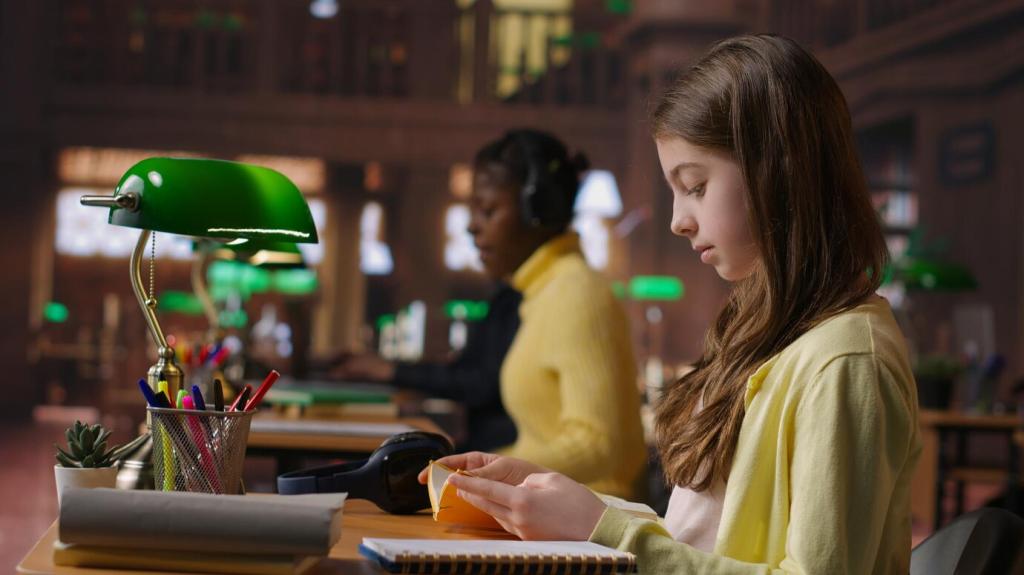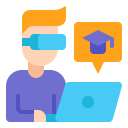Virtual Reality: Revolutionizing Modern Education
Immersive Learning Environments
Enhancing Engagement and Motivation
Immersive VR experiences captivate students by drawing them into dynamic, interactive worlds. This heightened level of engagement can make even the most challenging or mundane topics exciting, motivating students to actively participate in their own learning journeys. When learners are fully immersed, their focus sharpens, and their curiosity intensifies, resulting in improved attention spans and higher levels of motivation. VR also accommodates various learning preferences, ensuring that auditory, visual, and kinesthetic learners all benefit from a holistic educational approach.
Realistic Simulations and Exploration
With VR, students can travel through time and space—from exploring the depths of the ocean to journeying across ancient civilizations—without leaving the classroom. These realistic simulations help learners build a deeper contextual understanding by letting them visualize complex processes or historical events. For subjects like science or geography, VR allows for virtual laboratories and explorations of environments that would otherwise be inaccessible, helping students grasp theoretical concepts through experiential learning.
Safe Spaces for Experimentation
One of the most significant advantages of VR in education is its capacity to create safe, controlled environments where students can experiment, make mistakes, and learn without fear of real-world consequences. This is particularly beneficial in fields such as medicine, engineering, or chemistry, where hands-on practice is crucial but can be risky or expensive. By fostering a culture that encourages exploration and resilience, VR empowers students to take intellectual risks and deepen their problem-solving skills.
Personalized Learning Experiences
With VR, educational content can be customized for individual learners based on their proficiency levels, preferences, and goals. Students receive instant feedback on their progress, allowing them to identify strengths as well as areas for improvement in real-time. This personalized approach creates a more meaningful educational experience, as learners are able to progress at their own pace, revisit challenging concepts, and stay engaged through content that resonates with their interests.
Students living in remote or underserved regions often have limited access to skilled teachers, advanced laboratories, or cultural experiences. VR connects these learners with simulated resources and global experts, offering exposure to content and instruction they might not encounter otherwise. This technology brings the world into the classroom, ensuring that quality education is not confined by physical location.
Bridging Gaps in Access and Equity
Collaborative and Social Learning
Building Teamwork Skills
In virtual environments, students can partake in group projects and problem-solving activities that require effective communication, negotiation, and collaboration. Whether they’re constructing virtual models together or engaging in simulated debates, learners develop essential teamwork skills that will serve them well beyond the classroom. These experiences mirror real-world challenges and enable students to practice leadership and cooperation in a risk-free setting.

Facilitators of Learning Experiences
With advanced VR tools at their disposal, teachers are shifting from being sole sources of information to facilitators who guide, inspire, and support students as they navigate immersive content. This approach allows educators to focus on promoting critical thinking, creativity, and inquiry-based learning, while empowering students to take a more active role in their education. It also enables teachers to design more engaging and meaningful lesson plans tailored to students’ unique needs.
Ongoing Professional Development
VR is revolutionizing professional development for educators by providing immersive training modules, realistic classroom simulations, and virtual workshops. These tools enable teachers to refine their skills, experiment with new methodologies, and receive instant feedback in a risk-free setting. Ongoing exposure to innovative pedagogies ensures that teaching practices remain dynamic, effective, and relevant to the needs of 21st-century learners.
Collaborative Curriculum Design
The collaborative nature of VR extends to teachers as well, who can connect with colleagues worldwide to share ideas, resources, and best practices. By working together in virtual spaces, educators can co-develop curriculum, participate in interdisciplinary projects, and stay abreast of trends in educational technology. This global exchange of knowledge fosters professional growth and supports the development of cutting-edge instructional materials.
Practical Skill Acquisition
VR offers unparalleled opportunities for hands-on learning, allowing students to practice technical skills in safe, immersive settings. From virtual chemistry labs to engineering simulations, learners can conduct experiments, operate machinery, and troubleshoot problems as they would in real-world scenarios. This practical experience is invaluable for building confidence and competence, particularly in fields where on-site practice is limited due to cost, risk, or logistical constraints.
Visualizing Complex Concepts
STEM subjects often involve intricate theories and systems that are difficult to grasp through textbooks alone. VR brings these abstract concepts to life by enabling students to visualize molecules, explore planetary systems, or witness the inner workings of a cell in three dimensions. By transforming complex ideas into interactive visual experiences, VR aids comprehension, retention, and application of knowledge.
Fostering Creativity and Critical Thinking
VR environments provide a blank canvas for students to create, design, and test their ideas in limitless ways. Whether it’s constructing architectural models, composing music, or crafting digital art, the creative potential is boundless. This freedom to experiment not only sparks imagination but also enables students to take intellectual risks, iterate on their ideas, and develop innovative solutions to complex problems.
Immersive scenarios in VR often simulate real-life challenges that require students to analyze information, weigh options, and devise strategies. These interactive problem-solving experiences enhance critical thinking and decision-making skills by pushing learners to consider multiple perspectives and anticipate outcomes. The instant feedback offered by VR systems reinforces learning and enables students to refine their approaches for greater success.
The versatility of VR facilitates interdisciplinary learning, allowing students to tackle problems that cross traditional subject boundaries. For example, a virtual project might integrate biology, environmental science, technology, and design to address a global issue like climate change. This approach nurtures holistic thinking and prepares students to address the complex, interconnected challenges of the real world.
